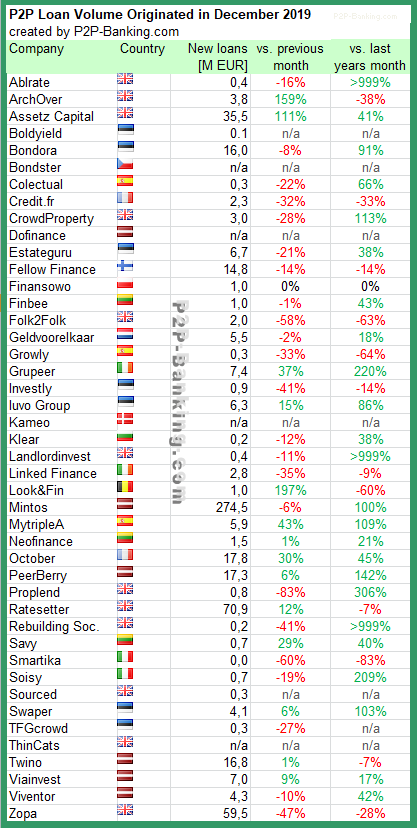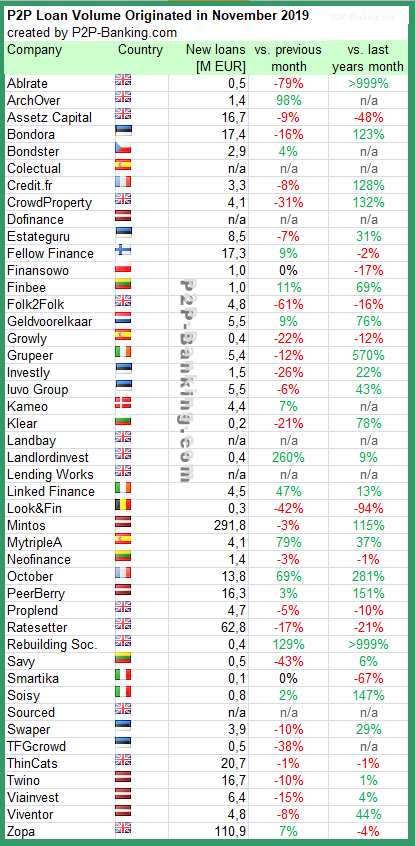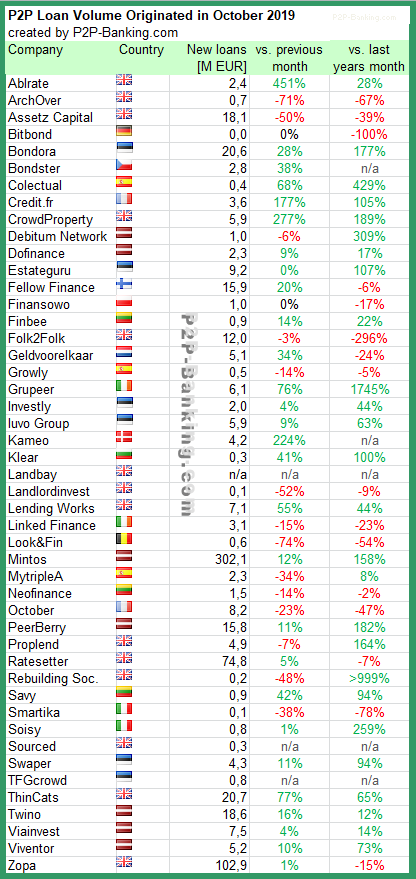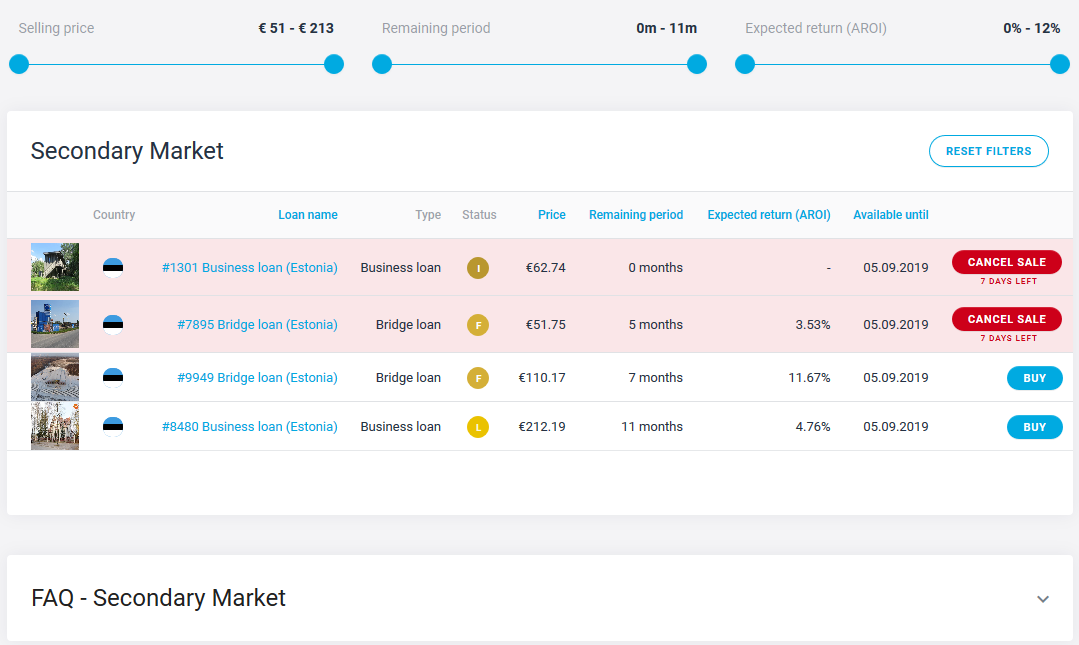The table lists the loan originations of p2p lending marketplaces for last month. Mintos* leads ahead of Ratesetter* and Zopa. The total volume for the reported marketplaces in the table adds up to 594 million Euro. I track the development of p2p lending volumes for many markets. Since I already have most of the data on file, I can publish statistics on the monthly loan originations for selected p2p lending platforms. This month I added Boldyield*. I removed Landbay (institutional only now) and Lending Works (monthly data not available anymore).
Milestones in cumulative volume lent crossed this month:
- Iuvo*: 100M EUR
- Zopa 5000M GBP
Investors living in national markets with no or limited selection of local p2p lending services can check this list of international investing on p2p lending services. Investors can also explore how to make use of current p2p lending cashback offers available. UK investors can compare IFISA rates.

Table: P2P Lending Volumes in December 2019. Source: own research
Note that volumes have been converted from local currency to Euro for the purpose of comparison. Some figures are estimates/approximations.
Links to the platforms listed in the table: Ablrate*, Archover*, Assetz Capital*, Boldyield*, Bondora*, Bondster*, Colectual*, Credit.fr*, Crowdproperty*, Dofinance*, Estateguru*, Fellow Finance*, Finansowo*, Finbee*, Folk2Folk*, Geldvoorelkaar*, Growly*, Grupeer*, Investly*, Iuvo Group*, Kameo*, Klear*, Landlordinvest*, Linked Finance*, Look&Fin*, Mintos*, MyTrippleA*, Neofinance* , October*, Peerberry*, Proplend*, Ratesetter*, Rebuilding Society*, Savy*, Smartika*, Soisy*, Sourced*, Swaper*, TFGcrowd*, ThinCats*, Twino*, Viainvest*, Viventor*, Zopa*.
Notice to p2p lending services not listed: Continue reading




 After several month of waiting since the first announcement, the
After several month of waiting since the first announcement, the 


